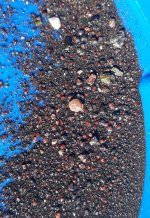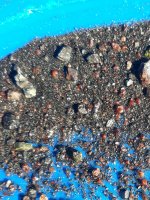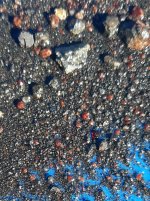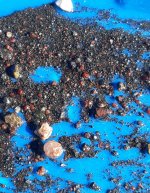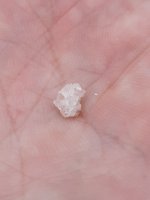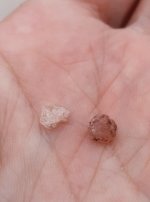I grabbed a pans worth of dirt from an inside bank of a tributary/wash last time I was out prospecting in the desert near the white tank mountains about 7 miles west of the white tanks actually, I just got around to panning it down this morning, no gold but a lot of pretty garnets, to small to be valuable but I thought I'd share...
